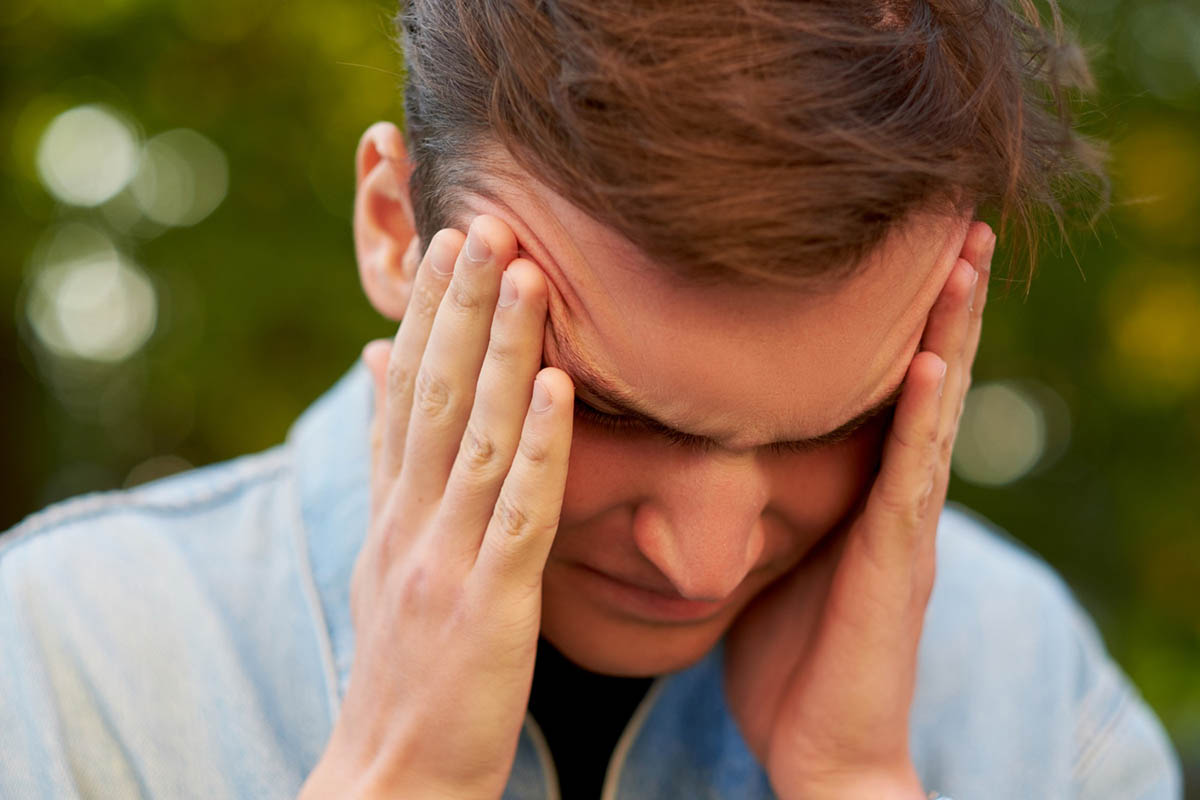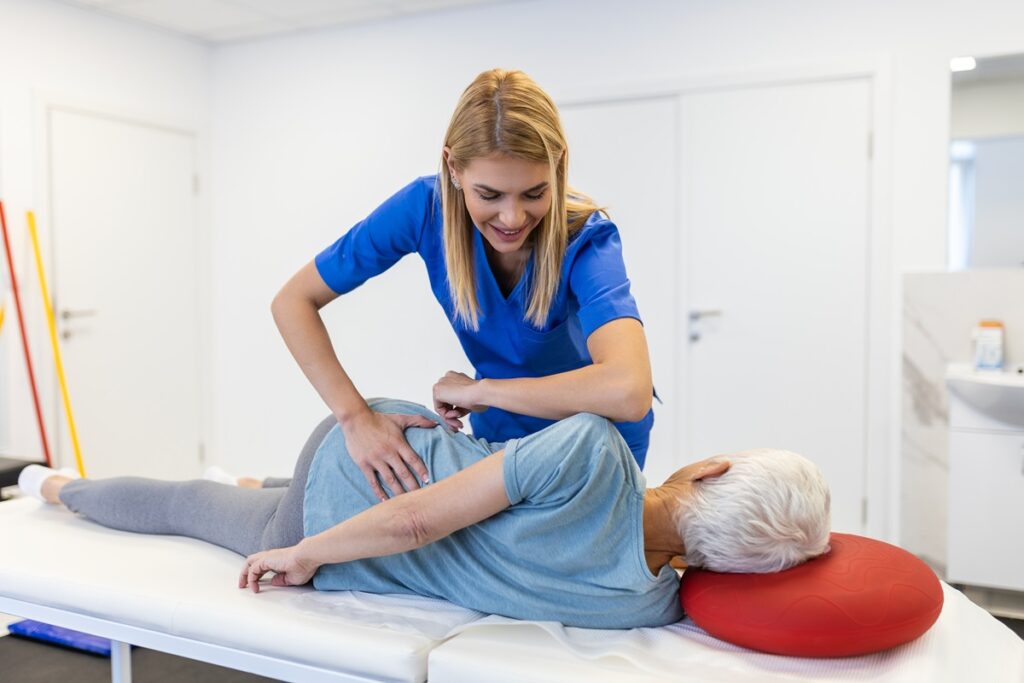Maintaining balance is essential for performing everyday activities and living independently. Whether walking on an uneven surface or reaching for a high shelf, balance enables us to move confidently and without fear of falling.
The Benefits of Physical Therapy for Balance

Maintaining balance is essential for performing everyday activities and living independently. Whether walking on an uneven surface or reaching for a high shelf, balance enables us to move confidently and without fear of falling. However, balance issues are widespread, especially among older adults and individuals with certain medical conditions. Physical therapy for balance, incorporating specialized techniques and exercises, can significantly help people manage or overcome these challenges. For those searching for “physical therapy for balance issues near me,” or wondering how balance therapy works, this guide highlights how physical therapy can be a crucial solution for enhancing balance, coordination, and quality of life.
In 2016, around one in seven adults in the United States reported issues with dizziness or balance, highlighting just how common these problems are among the general population. For many, these issues can disrupt daily activities, reduce mobility, and increase the risk of falls, particularly as they age.
What Are Balance Issues?
Balance issues refer to difficulties with staying upright, steady, or coordinated in movement. These problems may affect daily tasks, such as walking or turning, and they’re often accompanied by symptoms like dizziness, vertigo, or a feeling of being off-balance. Physical therapy for balance and coordination focuses on assessing and improving the components of balance, which include sensory input from the inner ear, visual cues, and muscle strength.
A combination of factors can lead to balance issues, including medical conditions and muscle weakness. The vestibular system, located in the inner ear, plays a primary role in balance by helping our brain interpret motion, spatial orientation, and body position. When the vestibular system or other sensory organs are disrupted by conditions like Ménière’s disease, vestibular labyrinth disorders, or inner ear problems, our ability to maintain stability is compromised.
Common Causes of Balance Issues
Many people experience balance issues at some point, and while age is a common factor, balance problems can also result from injuries, chronic diseases, or cognitive diseases. Here are some of the most frequent causes:
- Aging: As we age, the core muscle groups that support stability tend to weaken, and joint stiffness reduces range of motion, which together make balance more difficult. Balance issues often increase as people age, with those over 65 facing a greater risk of falls. In fact, roughly one-third of adults in this age group experience falls annually, and this number rises to over half among those aged 75 and older. These falls impact men and women similarly, underlining the importance of proactive balance training as part of healthy aging.
- Neurological Conditions: Conditions affecting the central nervous system, like Parkinson’s disease, multiple sclerosis, and traumatic brain injury, can interfere with the brain’s coordination of body movements, causing balance problems that require neurologic physical therapy.
- Vestibular Disorders: Disorders affecting the vestibular system—such as vertigo, Ménière’s disease, and motion sickness—disrupt balance by affecting the semicircular canals and otolith organs in the inner ear. Conditions like cervical vertigo are particularly challenging as they impact head and neck movement, further complicating balance. Gaze stabilization exercises and gait training are often recommended as part of physical therapy to counteract these issues.
- Injuries: Injuries to the lower limbs or spine impact balance by disrupting the proprioception (or body-position senses), especially if they impair the spinal cord or result in muscle weakness. Proprioceptive exercises can help regain the sense of limb positioning and improve balance.
- Medications: Certain medications cause dizziness or lightheadedness, which can lead to balance problems. These side effects often worsen with age, increasing the need for interventions like balance retraining and gaze stabilization.
- Vision Impairments: The ability to see plays an essential role in balance. Conditions affecting the eyes, like cataracts or blurred vision, can interfere with movement coordination. Visual exercises and posture retraining techniques can help reduce the impact of these conditions on balance.
Understanding these causes can empower individuals to seek the right help. Physical therapy for balance issues targets these underlying factors, offering tailored solutions to manage or mitigate balance challenges effectively.
Symptoms of Balance Issues

When balance is compromised, it often manifests in specific symptoms, which can vary in intensity and frequency. Recognizing these signs is the first step in addressing balance issues through physical therapy for balance.
Feeling Off-Balance or Unsteady
One of the most common symptoms is a persistent feeling of unsteadiness. This can be particularly noticeable when walking on uneven surfaces or turning quickly. Physical therapy can help by strengthening core muscle groups and improving static balance through exercises like the tandem balance and toe stands.
Feelings of Faintness or Lightheadedness
Lightheadedness, especially when transitioning from sitting to standing, can make movement feel unsafe. This feeling can often be related to blood pressure changes or medications and can be addressed by working on balance retraining exercises under the supervision of a physical therapist.
Dizziness or Vertigo
For many, balance issues come with dizziness or vertigo—a spinning sensation that often stems from problems in the vestibular system. Techniques like the Epley maneuver, commonly used in vestibular rehabilitation therapy, can be particularly effective in addressing vertigo and related balance problems.
Falling or Feeling as if You Are Going to Fall
The sensation of an impending fall can significantly impact one’s confidence and lead to activity avoidance. Physical therapy helps prevent falls through perturbation-based balance training, which simulates different movement challenges to improve overall balance control.
A Sensation Like You’re Floating
This floating sensation, often caused by vestibular or inner ear issues, can make one feel disconnected from their surroundings. Exercises that improve spatial orientation and engage the vestibular test battery are frequently used in physical therapy to counteract this feeling.
Blurred Vision
Impaired vision can interfere with movement coordination, causing individuals to misjudge steps or obstacles. Gaze stabilization exercises are effective in helping the eyes focus during movement, reducing blurriness and enhancing balance.
How Physical Therapy Helps Improve Balance
Physical therapy for balance issues involves targeted techniques that strengthen muscles, improve flexibility, and enhance balance coordination. Therapists use specialized techniques to improve both static and dynamic balance. Balance testing is often conducted to assess balance limitations and develop a customized plan. Techniques may include musculoskeletal techniques, habituation techniques, and passive motions to improve posture, body awareness, and muscle strength.
Therapists may incorporate balance retraining exercises, which teach individuals how to respond to various movement challenges. These retraining methods often include gait training and perturbation-based balance training, which simulate real-life scenarios to improve reflexes and fall prevention skills. Tools like wobble boards and resistance training help improve strength, while exergames or balance-focused video games engage multiple senses to support balance improvement.
Key Benefits of Physical Therapy for Balance
Physical therapy for balance offers comprehensive benefits, each contributing to enhanced stability, confidence, and overall well-being. A variety of physical therapy services target core strength, coordination, and stability, making it easier to manage balance-related challenges effectively.
Research, including a meta-analysis of eight trials involving 483 participants, has shown significant improvements in balance after undergoing exercise-based physical therapy. In fact, across all studies, participants reported better outcomes on the Berg Balance Scale, indicating enhanced stability and a lower risk of falls following therapy. This evidence supports the effectiveness of structured balance exercises as part of physical therapy programs.
Improved Stability and Coordination
Physical therapy exercises improve stability and coordination by strengthening core muscles and refining proprioceptive senses. By enhancing body awareness, individuals gain confidence in their movements.
Increased Strength
Physical therapy often involves resistance training and exercises that target key core muscle groups. These routines help improve overall strength, particularly in the legs and core, supporting a more stable posture.
Increased Confidence and Independence
For those with balance issues, the fear of falling can make them reluctant to perform even simple tasks. Through consistent therapy, they build the confidence needed to move independently and participate in daily activities without relying on others.
Injury and Fall Prevention
Through fall prevention training, individuals develop strategies to prevent falls. Techniques like perturbation-based balance training and exercises on wobble boards mimic unexpected movements, allowing people to practice balance control in a safe environment.
Improved Movement
Gait training and balance retraining techniques enhance smoothness of movement and stability, which helps reduce fatigue and improve posture during walking and standing.
Enhanced Quality of Life
By reducing balance symptoms and restoring independence, physical therapy for balance issues leads to a better quality of life, allowing individuals to engage in activities and community programs they enjoy.
Physical Therapy Exercises to Improve Balance
To improve balance, therapists use specific exercises targeting stability, proprioception, and flexibility. These exercises help strengthen core muscle groups and improve spatial awareness, reducing the risk of falls.
Toe Stands
Toe stands involve rising on the toes and then slowly lowering down. This exercise builds calf strength, which supports ankle stability, an essential component of maintaining balance.
Tandem Balance
This exercise involves standing heel-to-toe to narrow the base of support, strengthening static and dynamic balance. Practicing tandem balance enhances control and awareness of body positioning.
Standing Marches
Standing marches, which involve lifting each knee to hip level, improve leg strength and posture, both critical for stable movement.
Weight Shifts
Weight shifts focus on moving weight from one leg to the other, improving body-position senses and preparing the body for dynamic movement.
One-Legged Stand
Standing on one leg challenges balance by reducing the support base. It helps develop proprioception, a crucial sense that tells the brain about body positioning in space.
Knee Curl
Knee curls involve bending one knee and bringing the heel towards the back. This movement strengthens hamstring muscles, essential for stability.
Side-Stepping
Side-stepping helps strengthen hip muscles and improve lateral movement, crucial for avoiding falls when moving sideways or adjusting direction.
How to Prevent Balance Issues

Preventing balance issues involves staying physically active, practicing dynamic balance exercises, and engaging in activities like tai chi or yoga. Maintaining a home exercise program that includes simple exercises such as toe stands, standing marches, and weight shifts can significantly reduce the risk of balance deterioration. Ensuring that any medical conditions are well-managed is also crucial to maintaining balance.
Discover How Sustain Fitness and Physical Therapy Can Improve Balance!
If you’re searching for “physical therapy for balance issues near me,” Sustain Fitness and Physical Therapy offers specialized programs for all ages and abilities. Our movement experts provide customized treatment plans based on each individual’s unique needs.
At Sustain Fitness and Physical Therapy, we specialize in helping clients overcome balance issues with targeted, expert care. Our comprehensive physical therapy services address a range of conditions, from strengthening coordination and stability to managing complex cases like cervical vertigo. Our team is committed to restoring your balance, reducing dizziness, and empowering you to regain confidence in your daily activities.
Whether it’s balance retraining, vestibular rehabilitation, or strengthening exercises, our team is here to guide you on the path to stability.
Conclusion
Physical therapy for balance addresses the complex components of stability, from inner ear health and sensory input to muscle strength and coordination. Whether you’re recovering from an injury, managing a condition, or simply looking to stay active, physical therapy for balance issues offers a path to improved quality of life.
FAQs
What does a physical therapist do for balance?
A physical therapist conducts balance testing to understand specific issues and creates a treatment plan involving exercises like balance retraining, proprioceptive exercise, and gait training to improve stability and coordination.
What is the best physical therapy for balance issues?
The best physical therapy includes exercises like one-legged stands, tandem balance, and gaze stabilization exercises. The specific plan depends on each individual’s symptoms and goals.
What is the best exercise to improve balance?
One of the best exercises to improve balance is the one-legged stand. Practicing this exercise strengthens the legs and core, crucial for maintaining balance and preventing falls.
Dr. Adam Babcock PT, DPT
“We Help Active Adults Quickly Recover From Pain Or Injury So They Can Stay Active, Get Back To What They Love To Do, and Do It For Decades”






